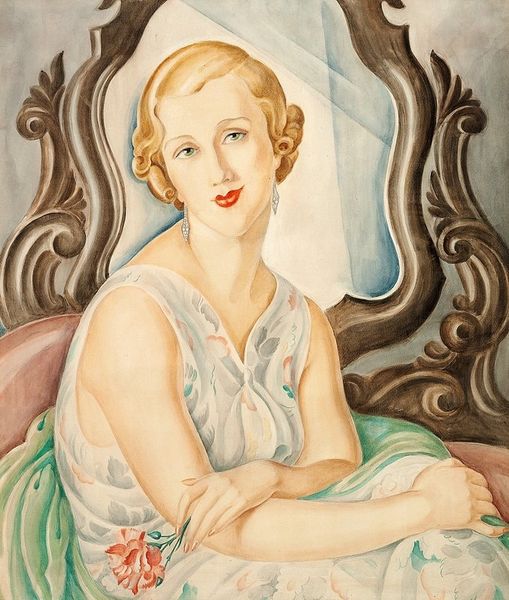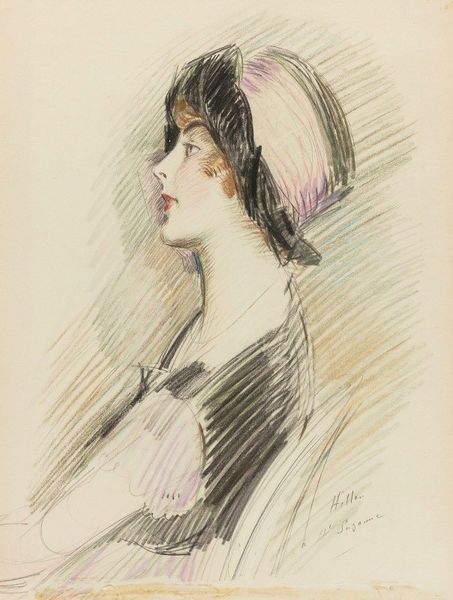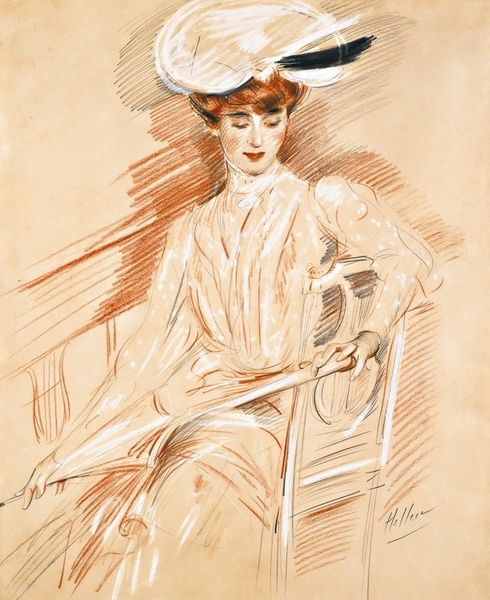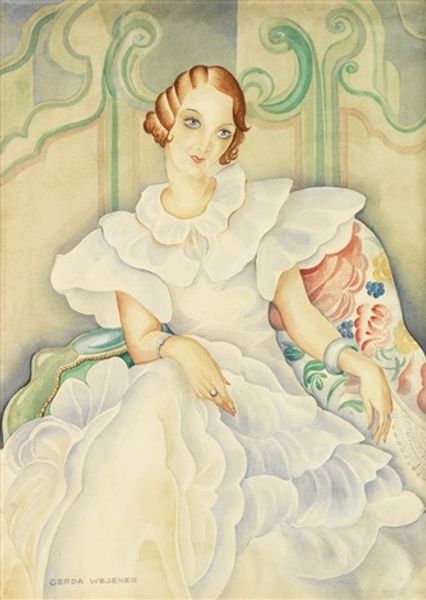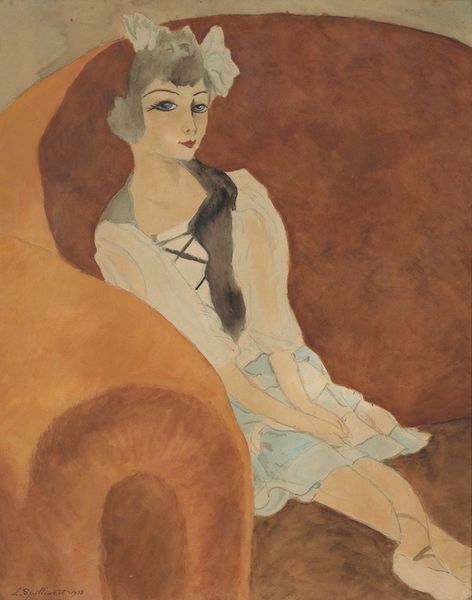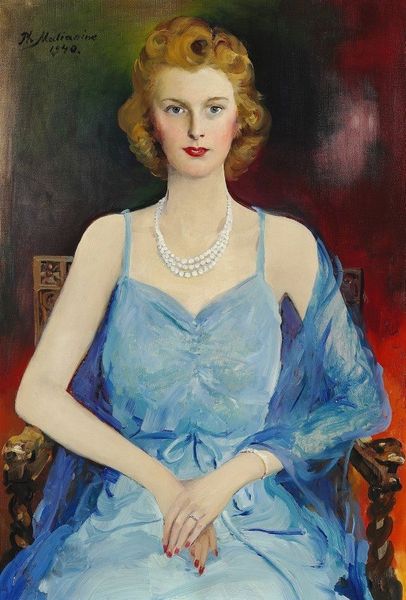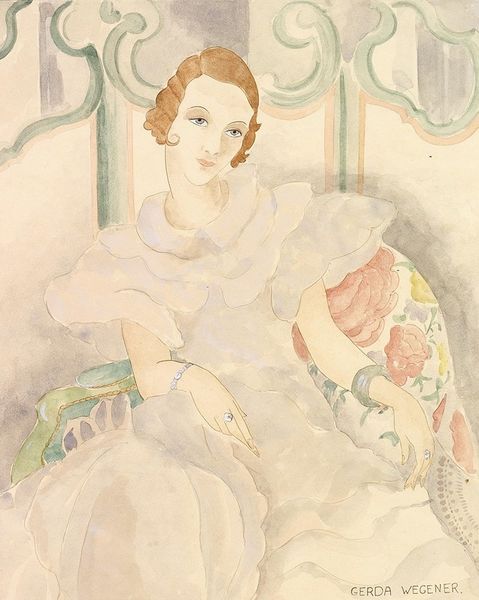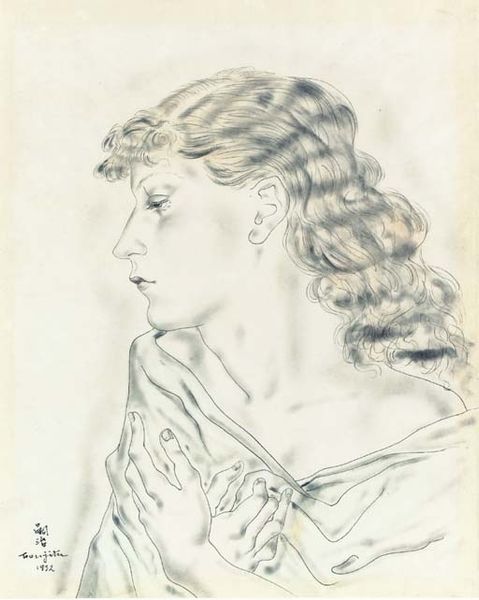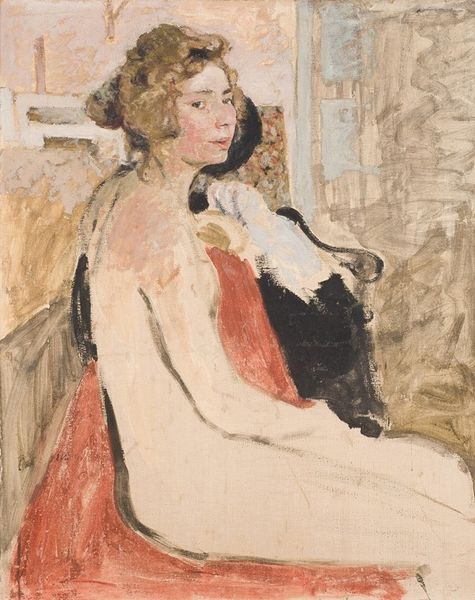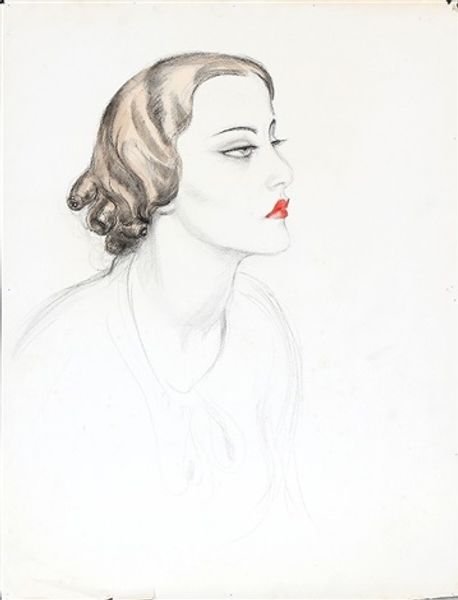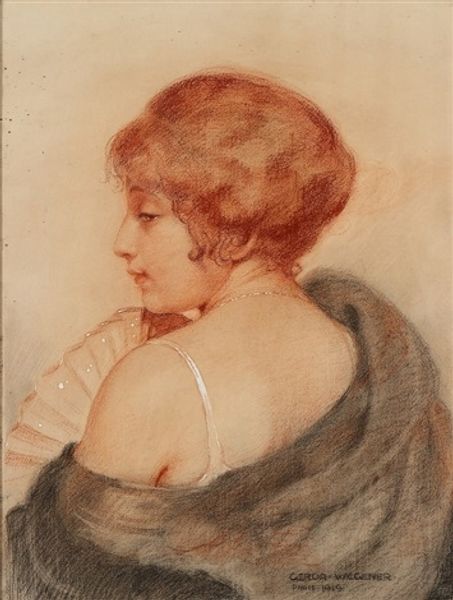
Copyright: Public domain
Curator: This artwork, titled "Portrait," was completed by Gerda Wegener in 1931. It's rendered in colored pencil and watercolor on paper. Editor: It strikes me immediately with its melancholic tone. The palette is very subdued; even the blue polka dots on her shawl have a muted quality, as though the colors themselves are reflecting a quiet sadness. Curator: Wegener’s portraits, including this one, often depict women with a sense of fashionable ennui. Considering the period, the interwar years, there was a cultural emphasis on female empowerment balanced with societal expectations, which likely shaped her artistic expression. Editor: Absolutely. There is something carefully arranged about it. Consider how the cool tones of the background subtly push the figure forward. The way her blonde, perfectly waved hair provides the lightest value in the image—guiding the eye upward to her expression. Curator: It’s crucial to remember Gerda Wegener's place in the art world of Paris and Copenhagen at this time. She not only captured the aesthetic ideals, she also offered a commentary on gender roles through the personalities of her subjects. Editor: Speaking of aesthetics, the very subtle transitions in the watercolor are magnificent. And the drawing skill apparent in the delineation of her features is formidable, softened just so around her eyes... it keeps you searching. Curator: I find it poignant to consider Wegener's own life alongside these images. She and her spouse, Lili Elbe, navigated significant personal and social challenges related to gender identity during a period of tremendous cultural change, further highlighting the layers within this work. Editor: Seeing that social context sharpens one's understanding. The formal construction lends a particular air—while technically brilliant, it somehow evokes vulnerability. Curator: I appreciate how both the formal elements and historical context create such a dialogue. Wegener provides a lens onto the complex female identity of the early 20th century. Editor: Agreed, thinking about color and form heightens that perspective; it emphasizes that a lot is being conveyed about feeling, personality, and perhaps struggle through the sitter's composure and features.
Comments
No comments
Be the first to comment and join the conversation on the ultimate creative platform.

